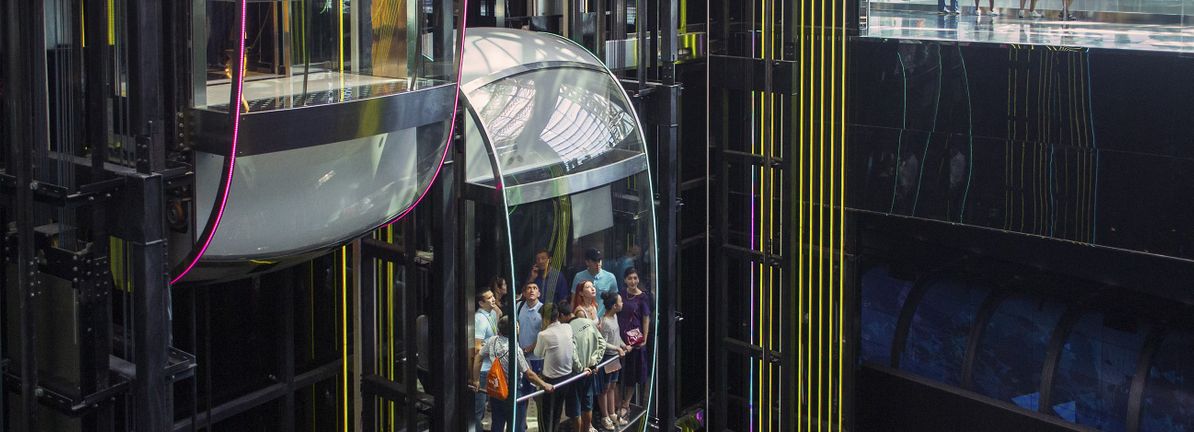Last night, at the annual Rock & Roll Hall of Fame induction ceremony in Cleveland, Ohio, the late Warren Zevon was posthumously honored with the Musical Influence Award by his longtime friend and former late-night TV host David Letterman. After…
Author: admin
-

5 habits proven to improve longevity, revealed by top heart surgeon
We all want to live longer, don’t we? Even if it not for ourselves, living longer is a dream for many, to see their families thrive, and spend time with one’s grandchildren and even great grandchildren! However, while genes do play a role…
Continue Reading
-

The Strad News – 2025 Concours de Genève viola finalists announced
Read more news stories here
The viola semi-finals of this year’s Concours de Genève took place from 6 to 9 November at the Conservatoire de Genève in Geneva, Switzerland. The eight semi-finalists undertook three rounds: a 60-minute…
Continue Reading
-

Inter Milan 2-0 Lazio (Nov 9, 2025) Game Analysis
Inter Milan beat Lazio 2-0 at the San Siro to go top of Serie A.
Captain Lautaro Martínez fired the Nerazzurri into an early lead with Ange-Yoan Bonny slotting in a second just after the hour.
Cristian Chivu’s side head into the international…
Continue Reading
-

Virion Therapeutics Reports Progress Towards HBV Functional Cure with Sustained and Continued HBsAg Declines up to One Year After a Single VRON-0200 Dose From its Phase 1b Study at AASLD’s The Liver Meeting® 2025
PHILADELPHIA–(BUSINESS WIRE)–Virion Therapeutics, LLC, a clinical-stage biotechnology company, developing novel T cell-based immunotherapies that utilize checkpoint modifiers, today announced at AASLD’s The Liver Meeting®, in Washington…
Continue Reading
-

With family support, adults in rural China reduced blood pressure by average of 10 mm Hg
Research Highlights:
- Adults in rural villages in China who participated in the Healthy Family Program, a family-based intervention that involved regular blood pressure monitoring, the use of low-sodium salt substitutes and…
Continue Reading
-

Brazil beat Portugal to win FIFA U17 men’s futsal title; hosts Senegal top women’s event
Mareme Niang leads hosts Senegal to women’s title
In the match for third place, meanwhile, Morocco beat hosts Senegal 14-7, denying the home side their first win of the tournament.
Captain Hamza El Ahmadi, who scored twice, led the Atlas Lions to…
Continue Reading
-

Moto Buds Bass are beefy earbuds with ANC and Hi-Res Audio for cheap
What you need to know
- The Moto Buds Bass are budget earbuds retailing for around $65 with Hi-Res Audio and more.
- The earbuds have multiple ANC modes that can cancel out up to 50dB of unwanted noise.
- Moto Buds Bass have up to 43 hours of battery…
Continue Reading
-

Assessing Valuation After Recent Share Price Volatility
Brown & Brown (BRO) continues to attract attention from investors interested in the insurance sector’s performance and resilience. Recent price movement shows some volatility, which prompts questions around valuation and the company’s recent growth numbers.
See our latest analysis for Brown & Brown.
Brown & Brown’s share price has taken a hit recently, dropping over 18% in the last month after some volatility in the broader insurance sector. While the 1-year total shareholder return sits at -29.7%, the bigger picture shows a strong recovery streak with gains of 41% and 72% over the past three and five years respectively. This reflects momentum that has cooled off lately but has not erased the longer-term growth story.
Curious where the next opportunity might come from? Now could be the perfect time to broaden your scope and discover fast growing stocks with high insider ownership
With shares trading below analyst targets after recent declines, the key question remains: is Brown & Brown now undervalued, or has the market already accounted for future growth in the current price?
The fair value calculated in the most closely followed market narrative comes in at $97.08, which is significantly above Brown & Brown’s last close at $78.54. This valuation sets an optimistic tone that contrasts with recent price pressure, hinting at substantial upside potential if assumptions hold true.
Brown & Brown’s strategic focus on acquisitions, having completed 13 acquisitions with projected annual revenues of $36 million, could significantly enhance future revenue streams and market presence. This aligns with their goal of sustained revenue growth through expansion.
Read the complete narrative.
Curious about the foundation of this punchy price target? There is a bold set of financial predictions guiding this view, including various growth projections and a premium valuation multiple. This narrative relies on more than just headline numbers. Uncover the blueprint now that drives this aggressive estimate.
Result: Fair Value of $97.08 (UNDERVALUED)
Have a read of the narrative in full and understand what’s behind the forecasts.
However, persistent inflation and potential declines in key market segments could challenge Brown & Brown’s growth expectations and dampen the current bullish valuation narrative.
Find out about the key risks to this Brown & Brown narrative.
While the latest fair value estimate paints Brown & Brown as undervalued, looking at price ratios tells a more cautious story. Its price-to-earnings ratio stands at 27.1x, which is quite a bit higher than both the US insurance industry average of 13.2x and its fair ratio of 17.8x. Compared to peers, Brown & Brown looks cheaper than the group average of 47.1x, but against broader market and fair value benchmarks, the stock is on the expensive side. This gap raises questions about what could happen if market sentiment shifts. Will the price come into line, or is there more risk than meets the eye?
Continue Reading
-

Evaluating Whether Shares Still Trade Below Fair Value After Strong Multi-Year Gains
Griffon (GFF) shares are drawing attention as investors weigh recent movements in the capital goods sector. The company has shown a mix of gains and dips in the past month. The stock’s longer-term performance has caught some eyes as well.
See our latest analysis for Griffon.
After a solid run over the past few years, Griffon’s 1-year total shareholder return of 4.9% might look modest. However, it follows a dramatic 3-year total return of over 130%. This signals that momentum may be pausing while investors reassess recent gains and future growth. The latest share price at $72.15 keeps Griffon in the spotlight for those tracking shifts in the capital goods space.
If you’re curious where other growth stories might emerge, why not broaden your search and discover fast growing stocks with high insider ownership
With the share price cooling off after years of outperformance and analysts still seeing upside, is Griffon currently trading at a discount, or is the market correctly factoring in its next growth phase?
Griffon’s widely followed narrative points to a sizeable gap between its current share price and fair value, setting up a compelling debate over its long-term potential. The calculation relies on assumptions about robust future earnings and improved profitability in the coming years.
“Ongoing investments in automation and modernization projects, particularly in HBP, are expected to further improve operating efficiencies and gross margins over the next several years, bolstering future earnings and cash generation.”
Read the complete narrative.
Think the price target is too optimistic? The math behind this bullish call is built on impressive profit expansion and substantial margin improvement. Want to see which key variables drive this premium valuation and why? The answer lies in bold assumptions the market has not fully priced in yet.
Result: Fair Value of $100.29 (UNDERVALUED)
Have a read of the narrative in full and understand what’s behind the forecasts.
However, persistent weak consumer demand or heightened tariff pressures could challenge Griffon’s outlook. These factors may limit upside potential as assumptions are put to the test.
Find out about the key risks to this Griffon narrative.
If you see the story differently or want to put your own analysis to the test, you can dive in and shape your own insights in just minutes with Do it your way
A great starting point for your Griffon research is our analysis highlighting 3 key rewards and 3 important warning signs that could impact your investment decision.
Continue Reading
